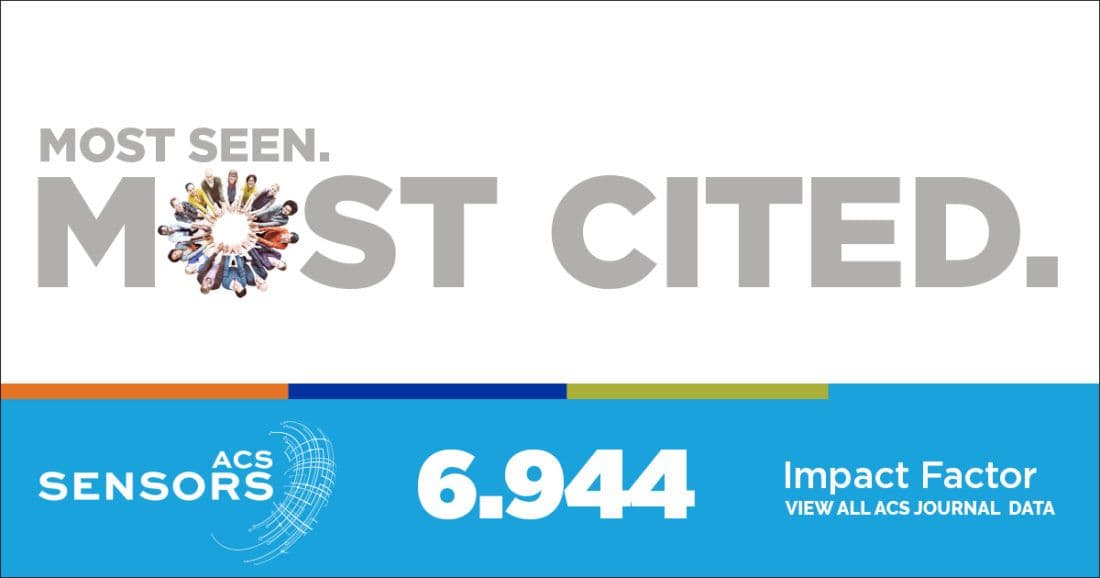Earlier this month, ACS Sensors received its first full Impact Factor, 6.944, in Clarivate Analytics’ Journal Citation Reports®. The Impact Factor is for the 2018 calendar year, and is determined by dividing the number of citations received in 2018 to content published in 2016 and 2017 by the number of articles published in ACS Sensors […]

Earlier this month, ACS Sensors received its first full Impact Factor, 6.944, in Clarivate Analytics’ Journal Citation Reports®. The Impact Factor is for the 2018 calendar year, and is determined by dividing the number of citations received in 2018 to content published in 2016 and 2017 by the number of articles published in ACS Sensors in 2016 and 2017.
“The impact factor of 6.944 is now very similar to our parent journal Analytical Chemistry; one of the great legacy journals of the American Chemical Society,” says ACS Sensors Editor-in-Chief, J. Justin Gooding.
The infographic shows a brief timeline and history of ACS Sensors, and how it has grown since its launch in 2016.
This could not have been achieved without the strong community of scientists who back ACS Sensors and produce high-quality research and engage with their peer’s work. The ACS Sensors editorial team wants to express its gratitude to the community of authors, readers, and reviewers who welcomed this new journal and helped make it a success in its first few years.
Top Ten Most Cited Papers from ACS Sensors in 2018
Make Your Mark!
Learn more about ACS Sensors and submit your research here.
Application papers should demonstrate the use of the sensor in complex samples, show it is fit-for-purpose, and exhibit a correlation of the sensor’s performance with an existing analytical method. Papers in ACS Sensors may focus on sensor development for commercialization or developing sensors that are used to provide new scientific knowledge. Articles may be entirely theoretical with regard to sensing, or they may report experimental results. The types of sensors the journal covers include:
- Biosensors
- Chemical sensors
- Gas sensors
- Intracellular sensors
- Single molecule sensors
- Cell chips
- Arrays
- Microfluidic devices
Primary research papers in ACS Sensors include Letters and Articles. Note that the maximum length of Letters is four journal pages and Articles are eight. In addition, ACS Sensors publishes Reviews, Perspectives, Sensor Issues and Introducing Our Authors. Perspectives should report the authors’ opinion on important new directions in sensing and discuss the nature of the opportunities perceived. Reviews can cover conceptual advances in sensing, review a class of sensor or analyte, or can be more of a tutorial that addresses a specific challenge in sensing and approaches to overcoming it. Sensor Issues will guide the community and new entrants to sensors on where the opportunities and challenges are by highlighting specific sensing issues.
